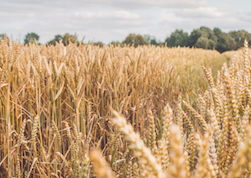Sensors helping farmers to avoid water and nitrogen over-use
Arable farming can be challenging and getting the balance right between the chemicals the crops need to thrive while minimising the impact on the environment is one key difficulty. On the other hand, the global food challenge is clear: by 2050 the world will need to feed 9 billion people, according to the World Economic Forum. This represents an increase of between 50-100%. A host of issues need to be addressed to achieve the target, from gender inequality, ageing demographics, skills development and global warming. But at farm level, agriculture needs to become more productive. The EU-funded IOF 2020 (Internet of Food and Farm 2020) has the ambitious goal of making precision farming a reality and one successful pilot project is bringing that ideal closer. Wheat harvested from a field in Boigneville, 100 km south of Paris, France, in August this year will have been grown with the benefit data from sensors. Nitrogen is a particular problem in agriculture: surplus nitrogen leaches from the soil into rivers and lakes and runoff ends up in water bodies. This can lead to eutrophication – algal blooms which consume oxygen, impacting fish stocks and biodiversity. While satellite pictures can indicate nitrogen levels in crops, soil levels are not revealed, which is where sensors come into play. IOF 2020’s wheat field pilot project combines on-the-ground sensor information with satellite data to tell farmers how much nitrogen or water their fields need. Florence Leprince, a plant scientist at Arvalis - Institut du végétal, the French arable farming institute which is running the wheat experiment explains, ‘Sensors are costing less and less, so at the end of the project we hope to have something farmers or farm cooperatives can deploy in their fields.’ IOF 2020, with a total budget of M€35, is fostering a large-scale uptake of smart machines and networks in the European farming and food sector. The heart of the project is formed by 19 use-cases in different European regions, organised in five trials covering several subsectors such as fruits, dairy, vegetables, meat and arable farming. Over 70 partners are involved, bringing together around 200 researchers. The pilot’s success shows how important harnessing data from different types of sensors (soil moisture, soil organic matter, climate, etc.) is. The information can be used to predict yields, define management zones and prepare task maps for farm equipment (e.g. variable application of herbicides, water and fertilisers). The project’s work in the area of arable farming covers four domains: management zoning in fields; soya protein management; precision crop management and farm machine interoperability. For more information, please see: Project website
Countries
Netherlands



